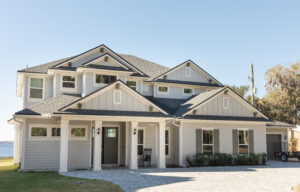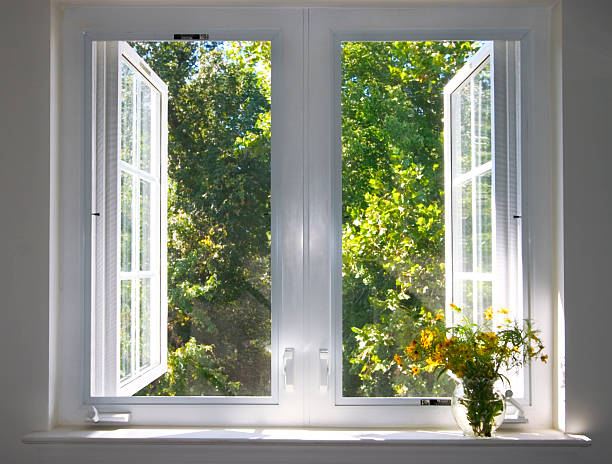When it comes to Denver siding, most homeowners focus on looks — color, style, and material. But there’s another critical choice to make: insulated vs. non-insulated siding. While both options protect your home’s exterior, they perform very differently when it comes to energy efficiency, comfort, and climate responsiveness.
So which one is right for your home — and, more importantly, your climate?
Whether you live in a region with freezing winters, blazing summers, or a mix of both (hello, Colorado), this guide will walk you through the pros and cons of insulated and non-insulated siding so you can make an informed, cost-effective decision.
What Is Insulated Siding?
Insulated siding is exactly what it sounds like: siding with built-in insulation. Most commonly, it comes in the form of vinyl siding bonded to rigid foam insulation, usually expanded polystyrene (EPS). This foam is molded to fit the contours of the siding panel, providing a tight fit that boosts structural strength and improves thermal performance.
By contrast, non-insulated siding is the traditional version — just the exterior panel without any additional insulation built in.
How Climate Affects Siding Performance
Your climate plays a huge role in determining which siding type is best for your home. Let’s break down the factors to consider:
Cold Climates (e.g., Denver, Minneapolis, Buffalo)
In colder regions with snow, wind, and fluctuating temperatures, insulated siding offers major benefits:
- Prevents heat from escaping through wall studs (thermal bridging)
- Reduces drafts and cold spots inside your home
- Lowers heating costs during the long winter months
- Adds protection against frost and freeze-thaw cycles
If you live in a cold climate like Denver, where winter temperatures can plunge below freezing, insulated siding helps stabilize indoor temperatures and lower your energy bills over time.
Hot Climates (e.g., Phoenix, Dallas, Miami)
Insulated siding also helps in hot climates by keeping heat out during the summer. It:
- Prevents solar heat gain from penetrating exterior walls
- Keeps your interior cooler without overworking the A/C
- Protects siding from sun-related warping or fading
That said, in consistently hot climates with little temperature variation, homeowners may prioritize UV-resistant siding over insulated siding, especially if their homes are already well-insulated from the inside.
Mild or Moderate Climates (e.g., San Diego, Seattle, Atlanta)
In areas with milder seasonal swings, non-insulated siding may be sufficient, especially if your home is newer and already energy-efficient. Many homeowners in temperate regions opt for traditional siding and invest in other energy-saving upgrades, such as high-performance windows or attic insulation.
Benefits of Insulated Siding
1. Improved Energy Efficiency
Insulated siding helps prevent thermal bridging and the transfer of heat through poorly insulating wall studs. It adds an extra layer of protection to your home’s envelope, reducing energy loss and lowering monthly bills.
In fact, depending on your climate and home design, insulated siding can reduce energy use by up to 8% and increase your home’s R-value (a measure of insulation) by up to 25%.
2. Enhanced Comfort Year-Round
No more freezing near exterior walls in winter or hot spots near sunny windows in summer. Insulated siding makes interior temperatures more consistent, reducing the need to constantly adjust your thermostat.
3. Better Noise Control
The foam backing in insulated siding dampens exterior noise, which is especially helpful if you live near a busy street or in a noisy neighborhood.
4. Increased Durability and Impact Resistance
The foam layer acts like a cushion, absorbing the impact from hail, flying debris, or even the occasional stray baseball. It also helps the siding maintain its shape, reducing the risk of warping or sagging over time.
Drawbacks of Insulated Siding
1. Higher Upfront Cost
Insulated siding generally costs 20% to 30% more than standard vinyl siding. While this may pay off over time through energy savings, it can be a hurdle for homeowners on a tighter budget.
2. Heavier and More Complex Installation
The added thickness and rigidity of insulated siding mean it must be cut and handled differently, potentially increasing labor time and installation costs.
3. Not Always Necessary in Mild Climates
If you live in a well-insulated home in a moderate climate, the return on investment from insulated siding may be minimal compared to its upfront cost.
Benefits of Non-Insulated Siding
1. Lower Cost
Standard vinyl or fiber cement siding without insulation is more budget-friendly, making it accessible to more homeowners.
2. Easier to Install
Non-insulated siding is lightweight and flexible, making it easier and faster for contractors to install — sometimes reducing labor costs.
3. Wide Range of Styles and Colors
Just like insulated siding, non-insulated options are available in a wide range of colors, profiles, and textures, including options that mimic wood or stone.
Drawbacks of Non-Insulated Siding
1. Less Energy Efficient
Without built-in insulation, this siding offers little to no resistance to heat transfer. You’ll rely more on interior insulation to maintain comfortable temperatures.
2. More Prone to Damage
Standard siding is thinner and more flexible, which means it’s easier to crack, dent, or warp, especially in areas with hail or high winds (like Colorado).
3. May Require Additional Insulation
In colder climates, your contractor may recommend installing rigid foam board underneath the siding, which adds cost and installation time — bringing it closer to the price of insulated siding.
Which Is Right for You?
Choose Insulated Siding If:
- You live in a cold or variable climate like Denver
- Your current home insulation is poor or outdated
- You want to lower your heating and cooling bills
- You’re concerned about noise and impact resistance
- You’re staying in your home long-term and want better ROI
Choose Non-Insulated Siding If:
- You’re on a tight budget
- You live in a mild climate with limited seasonal variation
- Your home already has great interior insulation
- You’re looking for a quick cosmetic upgrade without major changes to performance
Insulated vs. Non-Insulated Siding — What’s Best for Your Climate?
Your siding does more than protect your home — it influences your energy efficiency, comfort, and maintenance costs for decades. If you live in a climate like Denver, where the weather shifts from one extreme to another, insulated siding is often the better choice for long-term value and performance.
At Wallaby Windows & Siding of Denver, we help homeowners evaluate their siding needs based on their climate, budget, and goals. Whether you’re upgrading your siding or building new, our experts can guide you through your options and provide high-quality, professional installation.
Schedule your free consultation today and discover the best siding solution for your climate and home.


